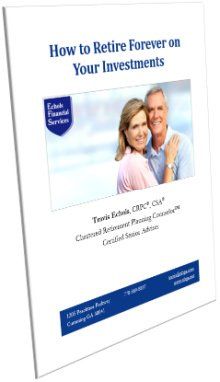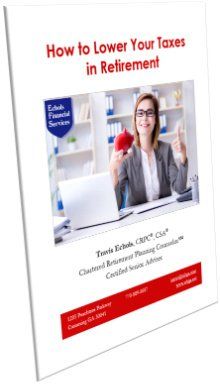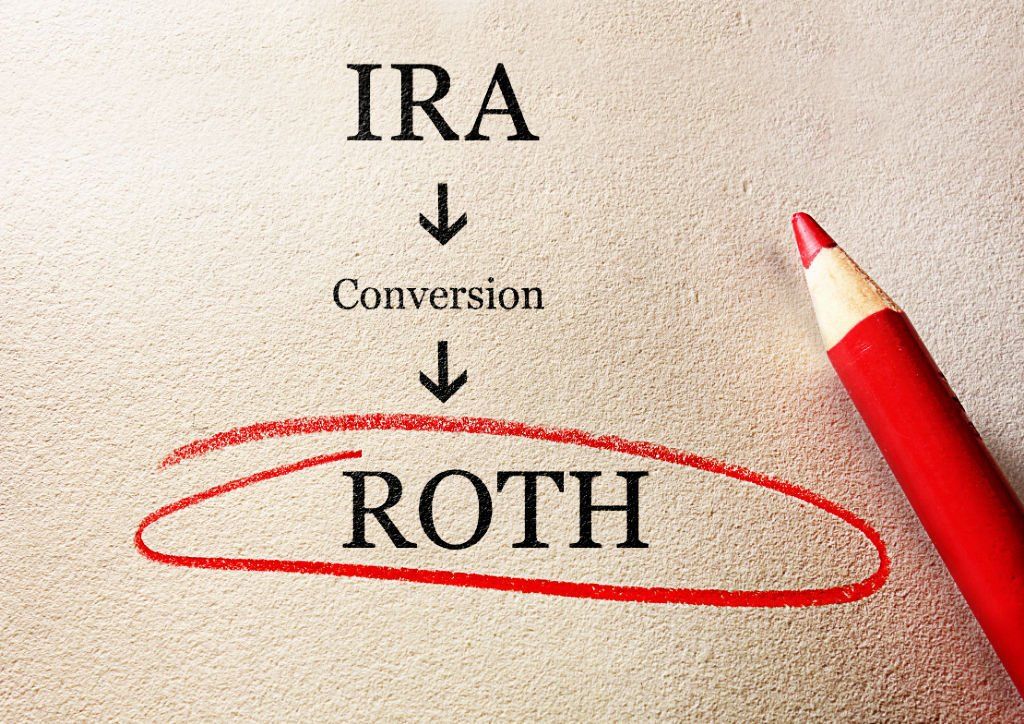How to Invest in Bonds in Retirement

As I have emphasized in the past,
investing for
retirement is not very
complicated. My advice for young investors: Invest
all you can in globally diversified stock funds, with a tilt toward the factors
of higher expected return (e.g., value, small caps, profitability, international
diversification). Wash, rinse, and repeat. That’s it. Simple.
However, as you approach the preservation and distribution phase of life, you need a different approach. There’s usually much more to lose than gain by being overly aggressive with your life savings. See How to Reduce Your Investment Risk in Retirement .
Academic research clearly shows the dangers of too much stock market exposure as you approach and enter retirement. See How to Navigate the Retirement Danger Zone .
Adding bonds to your portfolio in the right balance can solve this problem in a way that nothing else can.
So, the correct use of bonds is crucial to most retirees’ financial success. See Why in Invest in Bonds , A Frank Conversation about Interest Rates , and Investing for Income in Retirement .
As always, my job is to make the complex simple and the intimidating painless. As Oliver Wendell Holmes famously said, “I would not give a fig for the simplicity this side of complexity, but I would give my life for the simplicity on the other side of complexity.”
Sign up to receive other helpful email articles on retirement planning--free of charge
.
The executive summary below is my attempt to give you the simple on the other side of complexity.
Executive Summary
1. Every retiree needs a war chest made up of fixed
income (cash and bonds) to cover big spending surprises and to weather down stock
markets and avoid running out of money in retirement.
2. Emergency funds should be invested in the highest-quality, shortest-term fixed-income instruments like bank savings accounts or money market funds. Emergency money is highly liquid (i.e., accessible any time without principal loss).
3. Higher-paying bonds are also part of the war chest and serve to reduce portfolio losses and/or pay a higher income than stock dividends can. This is important to retirees, especially if regular income is being withdrawn from retirement assets.
4. Many different types of bonds are available to retirees. These different types of bonds have unique risk/return characteristics. Each retiree needs to evaluate these bond options with their financial objectives and the current economic situation in mind.
5. A portfolio with the right mix of bonds can then be created to provide the right balance to meet the retiree’s short-term and long-term goals.
6. As with stocks, a pure buy-and-hold approach for bonds is not always best. Personal and economic conditions change. Rebalancing of bond types (as well as changes within bond types such as liquidity, credit, and maturity, etc.) is needed to stay on track to accomplish your goals.
Detailed Study
Here is the detailed study below.
Emergency Money for Unexpected Spending Needs
Let me first say that one the most important uses of fixed income is cash reserves for emergency expenses. This type of money is part of the war chest a retiree should have for the inevitable spending shocks in life.
I describe this war chest in How to Manage Cash Flow in Retirement . This part of the retirement war chest is available at most any time without any worries of principal loss. U.S. Treasury bills, FDIC-insured savings accounts and Certificate of Deposits (CDs), and money market funds would be an example of instruments used for this purpose.
For retirees on a fixed income, I recommend one to two years’ worth of living expenses--normally in a separate account from their long-term retirement assets.
For example, if a couple is receiving $40,000/year from Social Security and $50,000/year from their investments, I would normally recommend $50,000 to $100,000 be set aside in savings and checking accounts. This easily-accessible money provides peace of mind and allows the retiree’s long-term retirement portfolio to do its job without disruptive changes due to life’s emergencies.
Bonds for Long-Term Retirement Income and Protection
The second part of the retiree’s war chest is fixed income instruments for retirement income and portfolio stability. Bonds play a vital role for retirees who are drawing income from their investments because bonds generally generate a higher income than stocks. Bonds are also not as risky as stocks and thus play an important role in stabilizing a portfolio in periods of stock market losses.
As I have discussed the risk premiums in stocks (see How to be a Happy Investor ), there are two primary risk premiums in bonds. (Note: A risk premium is the extra return investors expect from the risk taken.)
The two risk premiums in bonds are term and credit .
Term speaks of the maturity of the bond (when the repayment of principal is due). Longer maturity bonds are expected to return more than shorter maturity bonds.
Credit refers to the financial strength of the issuer to pay the interest and principal. Lower rated bond issuers are expected to return more than higher rated bond issuers. (All publicly traded bonds are assigned a quality rating based upon the financial stability of the issuing corporation, institution, agency or government.)
Par, discount, premium, calls, yield-to-maturity, yield-to-worse, tax-equivalent yield are all important in talking about bonds; but for the sake of brevity, let’s move on to the risks of bonds.
Bond Risks
All investments have risk. Even emergency money has inflation risk because “safer” investments lose purchasing power over time due to rising living expenses. No single investment delivers growth, high income, and safety of principal.
Interest Rate Risk . This is the risk that a bond’s price will fall due to rising interest rates. If you buy a bond paying 4% and one year later new bonds are paying 5%, you won’t be able to sell your bond on the market without discounting the price. Generally, the longer the maturity of the bond, the greater its interest rate risk.
Credit Risk . This is the risk of an issuer defaulting on paying the interest and/or principal owed to the bond holder. The market will require higher yields from bonds with higher credit risks.
There are other risks such as reinvestment risk, event risk, tax risk, and liquidity risk, but I will save that discussion for another article.
The difference between the yields of two bonds with differing credit ratings is called the credit spread. For example, if 5-year corporate bonds are yielding 5% and the risk-free 5-year Treasury Note is yielding 3%, the credit spread is 2% (5 – 3 = 2).
The difference in two bonds’ yields based on maturity is called the term or duration spread. For example, if the 30-year treasury rate is at 3.5% and the 1-month T-bill rate is at 2.5%, the term spread is 1% (3.5 – 2.5 = 1).
The bigger the yield spread, the steeper the yield curve. An inverted yield curve is when short maturity rates are higher than long maturity rates. With treasuries, you can say that the curve is inverted when the Federal funds rate goes above the 30-year yield. This condition is rare and can be a sign of a recession on the horizon.
Diversification
In stock investing, diversification is said to be the only free lunch. That is because, diversifying lowers your risk without lowering your expected return. Systematic risk however cannot be diversified away. In other words, market risk exists no matter how many stocks you own.
This principle can also be applied to lower quality bonds, in which credit risk can be minimized greatly through diversification. If you have many bonds, a default is not disastrous. On the other hand, if you are concentrated into one bond or a few bonds, a default would be disastrous.
For higher credit quality bonds, interest rate risk is the primary concern. The higher the credit quality, the lower number of bonds are needed for diversification purposes. (To add more bonds would not deliver any added value to the portfolio since the bonds are going to behave very similarly.)
The basic types of bonds are Treasuries, Government Agencies, Municipals, and Corporates. Foreign government and foreign corporate bonds are also available to U.S. investors. (As of December 31, 2017, U.S. government and corporate bonds made up only 31% of the total global bond market. Source: Dimensional Funds Matrix Book 2018)
Which Bonds to Own
Which bonds to hold in your portfolio depends on many factors. What are your financial goals? How much income do you need? How much risk are you willing to take? How much stock market risk are you taking? What is your age and stage of life? What is your tax bracket? In what type of account are your investments held?
Once some of these personal factors are considered, and the basic asset allocation question is decided (what percentage of stocks versus bonds should be in the portfolio), you should do a deeper dive into the yield and term curves.
From these curves, you can identify where is the most efficient areas of risk and return.
Longer maturity instruments are riskier than short. Yet returns are not consistently greater. Longer term bonds have much more volatility, since they are more sensitive to interest rate movements. So, keeping maturities to less than ten years normally produces the highest income per level of risk. Shorter-term bonds also have a lower correlation with stocks than do longer-term bonds.
For example, it usually doesn’t adequately reward the investor to buy a 30-year treasury bond. Even if the yield curve is neither flat nor inverted, the extra yield is not worth the risk and opportunity cost of the extended duration.
Similarly, there is little to gain from high yield bonds (fixed income instruments that are rated below “Investment Grade.”) While the promised interest return is slightly higher, the risk is inconsistent with safety and the return is usually below the historical returns of common stocks. If used at all, high yield bonds should be counted as stocks in your basic allocation and not be counted as part of the war chest. Bond investments therefore should be weighted toward investment grade quality.
Corporate Bonds . In a low interest rate environment, retirees who are hesitant of too much stock exposure, yet desire or need growth and/or income, cannot afford to sit on the sidelines with a large portion of their wealth earning little to nothing.
Waiting for interest rates to rise would make sense if you could predict that rates would rise significantly in a short period. But we can’t know that; and waiting is costly. See my paper , A Frank Conversation about Interest Rates. A study by Fama and Bliss in the September 1987 edition of the American Economic Review concluded that today’s yield curve is the best estimate of what future yield curves will be.
Under these conditions, investors may choose to add as a component to their bond portfolio intermediate-term, medium-grade corporate bonds. This could be accomplished by buying individual bonds, a fixed-maturity fund, or a Unit Investment Trust (UIT) that meets the investor’s income, growth and time horizon objectives. By holding the bonds to maturity, the price swings until maturity are irrelevant.
To capture this extra income, you need to diversify your bond holdings by industry (such as materials, information technology, telecommunications services, energy, financials, health care, industrials, real estate, and consumer discretionary), owning 15 to 20 bonds.
In the Financial Analysts Journal, May/June 2011, Volume 67 Issue 3, entitled Capturing the Credit Spread Premium , Kwok-Yuen Ng and Bruce D. Phelps conclude that investment-grade credit portfolios have generated a significant annual spread premium. They also showed how holding the bonds to maturity, versus selling downgraded bonds, increases the yield while maintaining similar risk.
Foreign Bonds.
Foreign bonds are not used to reduce a portfolio’s
credit risk, since U.S.-backed bonds alone can accomplish this goal. However, adding
foreign bonds can help you lower your portfolio’s interest rate risk. Foreign countries
have different yield curves. And with 69% of government and corporate debt
being outside of the U.S., there is a lot of opportunity abroad. The most
effective way to take advantage of this opportunity is to own a low-cost mutual
fund, composed of several countries’ foreign currency denominated debt
instruments, hedged for currency risk. This addition to your portfolio can reduce
your interest rate risk without sacrificing return.
U.S. Treasuries.
Treasuries are obligations that carry
the full faith and credit of the U.S. government. Treasury bills
have maturities of less than 6 months. Treasury notes
mature between 2 and 10 years. Treasury bonds
have maturity dates greater
than 10 years. Treasuries are often called “riskless” because of their safety
of principal (from a credit perspective). Therefore, diversifying down credit
risk by owning several different securities is not needed. Trading costs are low
due to their very high liquidity. Interest is taxable at the federal level but
not the state level.
TIPS
.
Allocating a portion of your bond portfolio to Treasury Inflation Protected
Securities (TIPS) can protect you against periods of high inflation. They have
a fixed rate of return with an added increase based on changes in inflation. Several
academic papers, such as the 2004 study “ Asset Allocation
with Inflation-Protected Bonds
,” the 2006 study “ Diversification
Benefits of Treasury Inflation Protected Securities: An Empirical Puzzle
”
and the 2016 study “ Residual
Inflation Risk
,” point out that retirees should strongly consider TIPS
instead of Treasuries, unless the risk premium for owning treasuries is large.
(At the time of this writing, it is not). If you are concerned about rising
rates, you can stay on the short maturity part of the curve to avoid term risk.
CDs.
While
CDs do not have the inflation protection of TIPS, CDs often carry a higher
interest rate without any additional principal risk. For retirees who can take
on some inflation risk, and can own individual securities in their portfolio, and
are willing to forego the convenience of a mutual fund, CDs should be
considered for a portion of the fixed income allocation.
Municipal Bonds
. A municipal bond is a debt security issued by a state,
municipality or county to finance its capital expenditures, including the
construction of highways, bridges or schools. Municipal bond interest is exempt
from federal taxes. For people living in the state of the municipality, they
can be exempt of state income tax too. As a result, Muni bonds’ yields are
significantly lower than taxable bonds of a similar maturity and quality. This makes
Munis more beneficial to people in high income tax brackets whose assets are in
taxable accounts. Note: There is hardly ever a good reason to own a tax-exempt bond
in a tax-deferred account such as an IRA.
Portfolio construction
To meet a person’s personal needs and goals, it often makes sense to use a balanced mix of two or more different types of bonds. As for the vehicle, a combination of individual bonds and funds (mutual funds/ETFs/ UITs) can be an advantage for larger portfolios; whereas funds would be more cost-effective and convenient for smaller accounts.
You can use bonds to build bond ladders (whether one-time ladders or rolling ladders). Ladders are a smart way to satisfy a family’s income needs while minimizing interest rate risk. For retirees withdrawing income from their portfolio, building a rolling bond ladder based on the efficient spots on the yield curve can be a winning strategy. A one-time ladder is effective for bridging an income gap, such as to Social Security, for example.
Individual bonds are not susceptible to the losses that bond mutual fund holders are, especially during times of rising interest rates.
However, mutual funds and ETFs can be more convenient and can mitigate credit risk by diversification more easily. Funds are also more appropriate for smaller portfolios in which broad diversification through individual bonds would be impractical. Active mutual fund management can also be helpful when investing in higher credit-risk bonds or international bonds.
Finding the sweet spots on the yield and credit curves can guide your asset allocation decisions. Instead of forecasting rate movements, use the information from the current curves. (Predicting interest rate movements is as impossible as predicting stock market movements. It is best to make your decisions based on the current yield curves.) Look for the sweet spots where you get the most extra return for the risk taken.
Tax considerations will also guide you as to what types of investments to hold in which type of accounts—as well as what type to investment vehicles to use (individual bonds, mutual funds, ETF, UIT, etc). Holding individual bonds will allow more control of tax harvesting in taxable accounts.
Conclusion
Getting the bond investments right in your retirement portfolio is an important piece of enjoying a successful and confident retirement.
There is a lot more to say about investing in bonds, but hopefully this article has given you some ideas to think about.


Travis Echols , CRPC®, CSA
Receive free Social Security Guide by email




Investment Advisory Services offered through JT Stratford, LLC. JT Stratford, LLC and Echols Financial Services, LLC are separate entities.











